Donkey’s Tail – Burro’s Tail
Donkey’s Tail (Sedum morganianum) is a popular succulent plant known for its unique trailing growth habit and fleshy bead-like leaves. Native to Mexico, this plant has gained immense popularity among succulent enthusiasts and plant lovers for its striking appearance and easy care requirements.
Origin and Taxonomy:
Donkey’s Tail, scientifically known as Sedum morganianum, belongs to the Crassulaceae family. It is native to the mountainous regions of southern Mexico, where it grows in rocky, well-draining soils.
Growth Habit:
Donkey’s Tail is a trailing succulent that forms long, cascading stems. These stems can reach several feet long and are densely covered with fleshy, cylindrical leaves. The growth habit of this plant makes it an excellent choice for hanging baskets or as a trailing accent in succulent arrangements.
Leaf Appearance:
The leaves of Sedum morganianum are one of its most distinctive features. They are petite, chubby, and bead-like, resembling the Tail of a donkey, hence the common name “Donkey’s Tail.” The leaves are bluish-green and have a smooth, waxy texture.
Light Requirements:
To thrive, Donkey’s Tail requires bright, indirect light. It can tolerate some direct sunlight, especially during the morning or evening, but intense, prolonged sunlight can cause leaf burn. Placing the plant near a sunny window or providing filtered light outdoors is ideal.
Watering Needs:
Donkey’s Tail is a drought-tolerant succulent and is susceptible to root rot if overwatered. It is essential to water the plant sparingly, allowing the soil to dry out completely between waterings. A well-draining soil mix and a pot with drainage holes are essential to prevent waterlogged conditions.
Soil Requirements:
Like most succulents, Sedum morganianum thrives in well-draining soil. A commercial succulent or cactus potting mix works well for this plant. It should be loose, porous, and have good drainage properties to prevent water accumulation around the roots.
Temperature and Humidity:
Donkey’s Tail prefers moderate temperatures and can tolerate various conditions. It can withstand temperatures as low as 50°F (10°C) and as high as 90°F (32°C). While it can adapt to different humidity levels, it generally prefers average humidity and can tolerate drier indoor environments.
Propagation:
Propagating Donkey’s Tail is relatively easy and can be done through stem or leaf cuttings. Stem cuttings are the most common method, where healthy stems are cut and allowed to callus before planting in well-draining soil. Leaf cuttings can also be taken, but they have a lower success rate than stem cuttings.
Common Pests and Diseases:
Donkey’s Tail is generally resistant to pests and diseases. However, overwatering or prolonged exposure to high humidity can make it susceptible to fungal diseases and root rot. Keeping the plant in well-ventilated areas and avoiding excessive moisture will help prevent such issues.
Uses and Decorative Appeal:
With its trailing growth habit and unique leaf appearance, Donkey’s Tail is a favourite choice for hanging.
Things to know about DONKEY’S TAIL
Common (vernacular) Name
डंकी टेल (Hindi), Donkey's Tail, Sedum morganianum, Burro's Tail, Horse’s Tail, Lamb’s Tail, Burrito and many more.
Botanical Name
Sedum Morganianum
Origin
Southern Mexico
Family
Crassulaceae (Stonecrop)
Plant Type
Tropical plant
Plant Features
Ornamental / Evergreen / Exotic
Classification
Succulent
Life Cycle
Perennial
USDA Hardiness Zones
10b to 11a
Landscape Uses
Hanging Basket, Container Planting, Interior scaping, Rock Wall and Houseplants.
Species
Sedum morganianum, Sedum morganianum ‘Burrito’, Giant Burro’s Tail and Harry Butterfield.
Varieties
It comes with few species differ in leaf structure.
Growth Shape / Habit
Trailing / Hanging
Size
Height : 3 to 4 feet tall and Width : 1 to 3 feet wide when mature.
Indoors or Outdoors
Outdoors : Donkey's tail can be used outdoors in shady plantings.
Indoors : Excellent plant grow in sunny window bright light.
Blooming / Flowering
Blooming period is late spring to early summer.
Flower Colour
Blooms are pink, white, orange or red with 1 inch 4-5 petals, star-shaped flower.
Lucky Plant
According to Feng Shui or Vastu Shastra, String of bananas does not have commonly known cultural, religious, or spiritual significance.
Lighting / Sun Exposure
It thrives in bright light, partial shade or medium level of direct sunlight. You can help your Donkey's tail by giving it the brightest spot in your house where it gets a lot of direct sunlight exposure.
Temperature
Grow best preferably ideal temperature between 18°C to 26°C.
Growth Rate
Donkey's tail is a slow and steadily growers plant.
Watering
Moderate watering, Mist or over head sprinkler to provide water and to improve relative humidity. Not tolerate overwatering it may cause root damage and yellowing of the leaves.
Fertilizer
Slow-release fertilizer, or a water-soluble liquid fertilizer once or twice in the growing season (Spring through Summer).
i.e. - Compost, NPK 10-10-10 fertilizer, liquid organic fertilizer etc.
Pruning
Pruning of Donkey's tail not much is needed. However, you can prune the plant if you want to encourage more growth. Trimming away only maintain its size or appearance and any dead leaves or stems.
Propagation
Seeds : This plant can also be grown from seed but it is not commonly available because seeds are quite difficult to obtain. So, It is very difficult and not recommended.
Stem Cuttings : The easier methods of propagation of Donkey's tail in moist potting mix soil via stem cuttings, and can be done during the spring and summer season.
Leaf Cutting : This is the easiest methods of propagation of Donkey's tail in moist potting mix soil via leaf cuttings, and can be done during the spring and summer season.
Division : Division of Donkey's tail can be done in Rainy season, or better in spring growing season February to March.
Dormancy Period
Month : November to February (winter season)
Shed their leaves and show poor growth, Watering minimally.
Avoid : Propagate, Fertilize and Repotting.
Container
Ceramic Pot, Plastic Pot, Terracotta or Clay Pot is preferred, which ensures good drainage as well as water holding capacity.
Soil Type
A well-drained Loam / Coarse potting soil is recommended as well as water holding capacity. Prevent soggy potting medium.
Our recommendation for potting mix : Equal part mixture of Garden Soil (25%) + Compost (25%) + River Sand (25%) + Cocopeat (25%). You can substitute pieces of Charcoal, Vermicompost, Perlite etc.
Soil pH
Neutral soil - Ideally 6.0 pH (potential of hydrogen).
Repotting
The Donkey's Tail doesn’t need repotting often because of plants have a smaller root system. These plants can go without repotting for a long time. If required then it should ideally once every 5 years at the beginning of spring.
Maintenance
Low maintenance and easy to grow.
Properties
Mildly Toxic to both humans and pets upon ingestion.
Benefits
Beautifying your space. Succulents continue the process of photosynthesis during daytime and overnight – releasing oxygen into your home 24/7. Because they are constantly taking in carbon dioxide and converting it to oxygen, they are continuously removing toxins from the air around you, leaving you with fresh, purified air.
Special Features
It's attract pollinators and songbirds.
Infestation / Pests
Aphids, Scale insects, Thrips, Mealy bugs, Spider mites and caterpillars etc.
Diseases / Problem
Physiological Problem : Anthracnose, Leaf Spot and Powdery Mildew.
Bacterial Problem : Bacterial Blight, Bacterial Wilt and Black Nose Disease.
Fungal Problems : Root Rot and Water Mold.
Some Glimpse of DONKEY’S TAIL


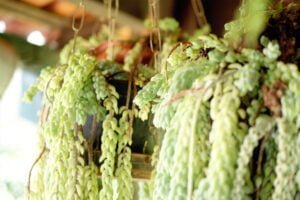


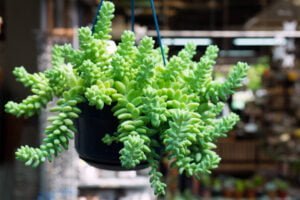


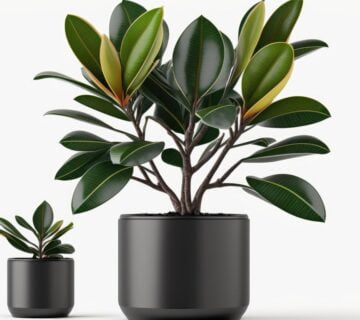
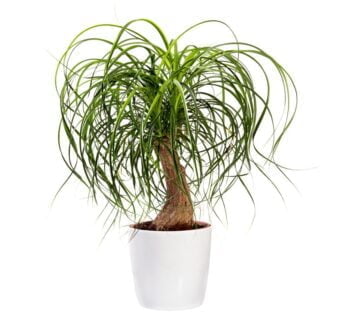
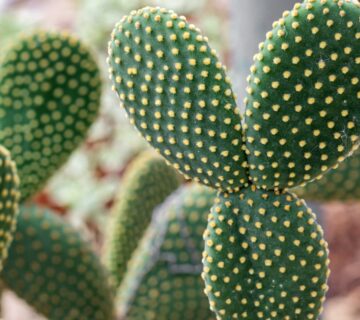
No comment